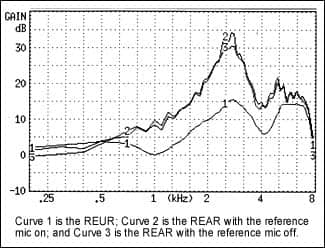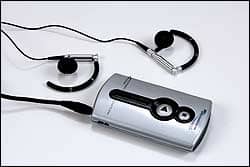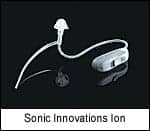
Two Easy Steps for Real Ear Testing on Open-Fit Devices
Use the normal recommended setup for the real ear test. Place the reference and probe microphones on the head as usual, and locate the soundfield speaker as recommended. Level the sound field with the ear unaided and, if desired, make an unaided response measurement (REUR). Now take the following steps:
Step 1. Turn off the reference microphone.
Step 2. Place the hearing aid on the ear and take the real ear aided response (REAR).

It is necessary to instruct the patient to hold still when making the REAR measurement with the reference microphone off. The hearing aid must be switched off while leveling the sound field.
The FONIX 7000 graph shows three curves. Curve 1 is of the REUR; Curve 2 is REAR with the reference microphone left on; Curve 3 is REAR with the reference microphone off. Signal levels were all 65 dB SPL RMS, digital speech, ANSI weighting. The additional gain at 2.5 kHz with the reference microphone left on is the result of measurement artifact.
For information, contact:
Frye ElectronicsTigard, Ore, (800) 547-8209 www.frye.com





